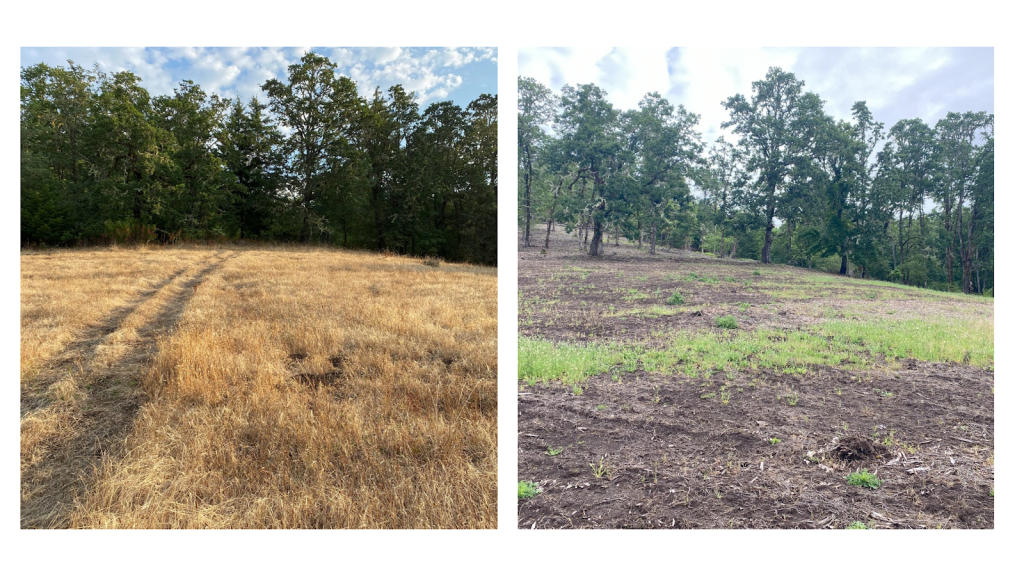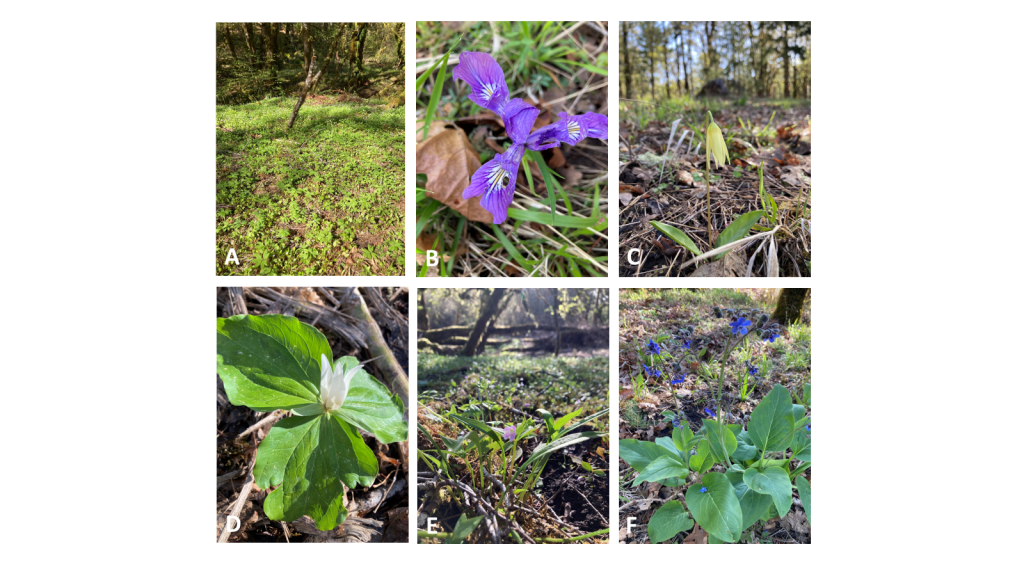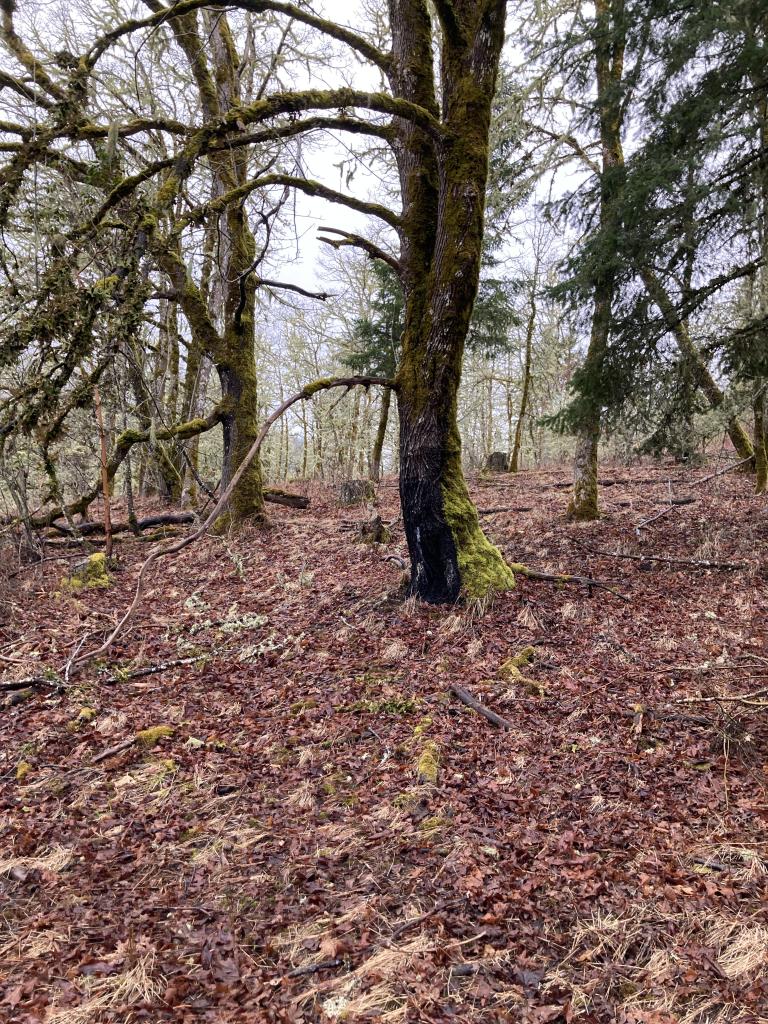By Aynesley Wilson, July 2024
As a transplant from the Arizona desert, I assumed dense coniferous forest was the natural state of the Oregon landscape. A Douglas-fir (Pseudotsuga menziesii) dominates the scene on the standard-issue license plate for Oregon. Therefore, conifer forest = Oregon, right? Not really. I have since learned through my work as a Restoration Technician with the Institute for Applied Ecology that although Douglas-fir are native to Oregon they can be a nuisance within prairie, riparian, and oak habitats.
With current awareness focused on the detriments of deforestation, it seems counterintuitive to remove living trees but that is exactly what was needed in a privately owned woodland just outside of Corvallis, Oregon. The 40-acre site includes several small remnant prairies and riparian habitats. Douglas-fir was planted with the existing Oregon white oak (Quercus garryana) and Oregon ash (Fraxinus latifolia) several decades ago and were competing for the same light and nutrients as the hardwood trees and understory plants. The current landowner and IAE staff agreed that removing the conifers and thinning some of the oaks was a necessary next step in restoring some balance. Valuable light would be returned to the woodland floor while also reducing fuels to increase fire resiliency. Win-win.
The results of tree removal coupled with treatment of invasive Himalayan blackberry (Rubus bifrons) and false brome (Brachypodium sylvaticum) have been astonishing. The oak and ash now have space to spread their canopies and the understory is coming to life with the germination of long dormant native seeds and the vibrant growth of previously suppressed shrubs and young oaks. The landscape has changed dramatically, both visually and ecologically.

Restoration actions began in 2022 and an inspirational number and diversity of understory and prairie plants have been making their triumphant return ( Figure 2 ); Siberian miners’ lettuce (Claytonia siberica), stinging nettle (Urtica dioica), Fendler’s waterleaf (Hydrophyllum fendleri), common camas (Camassia quamash), narrowleaf allium (Allium amplectans), cow parsnip (Heracleum maximum) and many others have returned to the riparian ash woodland. The upland oak woodland hosts western white trillium (Trillium ovatum), Tolmie’s star tulip (Calochortus tolmiei), Oregon fawn lily (Erythronium oregonum), tough-leaved iris (Iris tenax), fairy slipper (Calypso bulbosa), Pacific hound’s tongue (Adelinia grande), and multiple native grasses. When the largest of the upland meadows is seeded after completing three years of chemical fallow, it too will flourish into a colorful display of native flora, adding even more diversity to the habitat.

IAE and the private landowner we are working with are hopeful that opening the tree canopy will also allow the return of prescribed fire to this landscape. Oak woodlands in the Willamette Valley were historically maintained by indigenous peoples who frequently used fire as a tool in suppressing unwanted growth of grasses and young conifers in oak habitats. The mature oaks in this woodland bear charred, black bark indicating the historic use of fire in maintaining this very special site (Figure 3).

A secondary goal for this property is the sustainable harvest of First Foods by Native peoples. First Foods are those traditional foods eaten by local peoples pre-contact with Europeans. They are culturally important as well as nutritionally and ecologically valuable. It has been satisfying and so exciting to witness, to be a part of, and to share this remarkable re-awakening of the landscape, and through this project, to also grow my own knowledge of Willamette Valley habitats and the people sustained by them.

This project has been made possible through the generosity of the private landowner and our partners at the Oregon Watershed Enhancement Board (OWEB).
